




Your support is critical to our success.
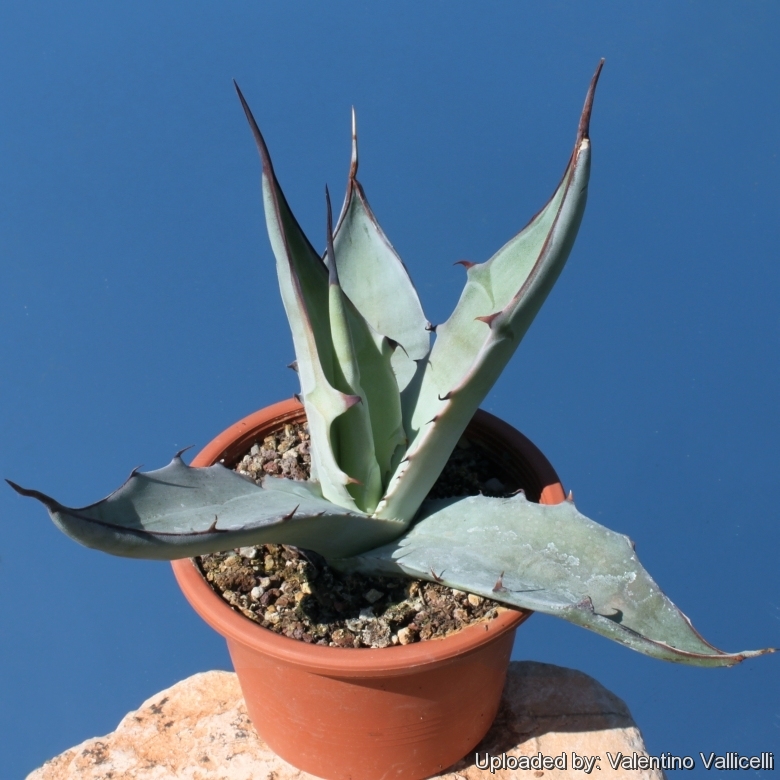
Origin and Habitat: Mexico (Baja California Sur, Sierra de la Giganta) between latitudes 27° and 25° N
Altitude: 600-1520 m asl.
Type locality: Above Rancho San Sebastian, Sierra de Las Palmas, about 50 km by road West of San Bruno, Baja California. Elevation 1150-1520 m.
Habitat: It grows in the xeric wetland habitat of the Sierra de la Giganta mountain formed by small sized oases, disconnected from one another during dry seasons, and found only in arroyos. It is often found closely associated with an oak woodland community that mantles the craggy tops of these volcanic mountains. These oases are species rich and harbor a variety of micro-endemic flora and fauna species. Other endemism found in this area comprises: Ferocactus peninsulaeSN|11977]]SN|11977]], Nolina beldingii, Galium carterae and Mammillaria multidigitataSN|5445]]SN|5445]].
Synonyms:
- Agave gigantensis Gentry
Description: Agave gigantensisSN|17455]]SN|17455]] is an attractive, symmetrical, medium sized agave with graceful, broad curving leaves. Plants are not known to produce offsets. The Agave gigantensisSN|17455]]SN|17455]] is so named not because of its giant size, but because of the origin of the original specimens: Sierra de la Giganta (Mountain of the Giantess), in Baja California, Mexico. This species is variable with some plants being quite large while others are of more modest size.
Stem: Stemless
Rosette: Solitary, rather open, few-leaved, 50-100 cm tall, 80-120 cm in spread.
Leaves: This species has fewer leaves compared with other agaves, but they are strong, broad, rigid, plane to cup-shaped on cross section, smooth, thick, broadly lanceolate, acuminate, widest in the middle, markedly narrowed at base, 40-75 cm long, 11-16 cm wide. The basal half of the margin is well armed with widely spaced prominent teeth on wavy mammilate projections. Teeth mostly 10-20 mm and even longer, the bases thick, frequently 2-3 cuspidate dark-brown to grey, oddly flexed and curved, generally remote, up to 6-8 cm apart. The terminal part of the leaf-margin toward the long tapering tip is horny and toothless. The leaves colour varies from dusky green, to green or grey, turning red to purplish with flowering, and sometimes these leaves are distinctly striped with pale blue bud imprints. The terminal spine is large and sharp, 3-6 cm long deeply sulcate above, straight or sinuous long decurrent and to form the corneous margin, sometimes to mid-leaf.
Inflorescence: Paniculate, slender up to 4,5 m tall from a waxy white bud. Panicles narrow, in upper part of shaft with 15 to 25 rather small umbels of flowers. Peduncular bracts lanceolate, papery.
Flowers: Waxy pale yellow, 48-60 mm long, with spreading tepals. Ovary spindle-shaped with a short thinner neck. Flowering tube, bulbous. Tepals 18-25 long and 5-6 mm broad, hooded at apex. Filaments 30-45 mm long, slender, anthers 18-25 mm long.
Fruits: Loculicidal capsules 3,5-4 cm long and 1,2-1,5 cm broad, oblong, non-beaked.
Bibliography: Major references and further lectures
1) Howard Scott Gentry “Agaves of Continental North America” University of Arizona Press, 01/Feb/2004
2) Urs Eggli “Illustrated Handbook of Succulent Plants: Monocotyledons” Springer, 2001
3) Hermann Jacobsen ”A Handbook of Succulent Plants: Abromeitiella to Euphorbia” Blandford Press, 1960
4) Yvonne Cave “Succulents for the contemporary garden” Timber Press, 01/gen/2003
5) Mark A. Dimmitt “A Natural History of the Sonoran Desert” (ASDM Press, 2000)
6) Maya, Coria, and R. Dominguez. 1997. "Caracterización de los Oasis. In Los Oasis de la Península de Baja California. México" L. Arriaga and R. Rodríguez-Estrella (Eds.) Pp 5-26. CIBNOR: Mexico.
7) Riemann, Hugo and Exequiel Excurra. 2005 "Plant endemism and natural protected areas in the peninsula of Baja California, Mexico." 122:141-150.
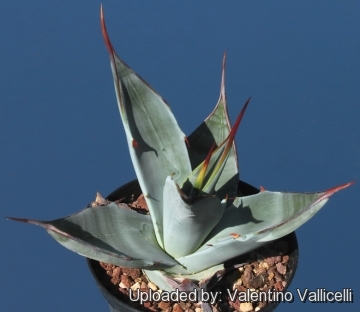
Agave gigantensis Photo by: Valentino Vallicelli
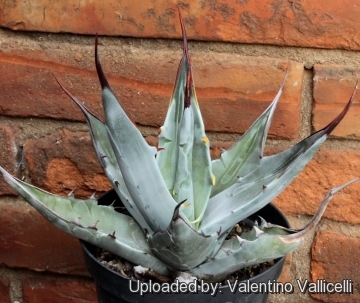
Agave gigantensis Photo by: Valentino Vallicelli
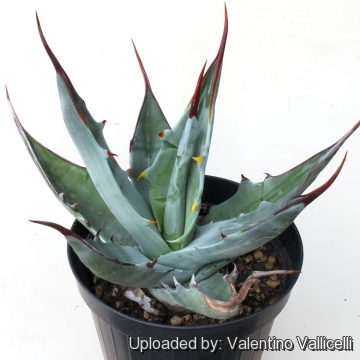
Agave gigantensis Photo by: Valentino Vallicelli
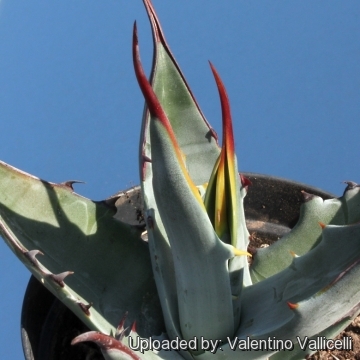
Agave gigantensis Photo by: Valentino Vallicelli
Cultivation and Propagation: Agave gigantensisSN|17455]]SN|17455]] is a splendid ornamental for a Mediterranean climate and one of the most striking species. It is an easy-to-grow plant that could well be valued and cultivated by the sophisticated agave fanciers.
Soil: It needs a very well-drained, soil.
Repotting: Use pot with good drainage.
Watering: Water regularly during the growing season from spring to autumn. In winter watering this plant can be done once every 1-2 months, there is no need to mist the leaves. Plants cultivated outdoors are drought tolerant and takes blasting heat and full sun.
Exposure: It do well in full sun or a lightly shaded area.
Feeding: During the beautiful season it’s good to enrich the soil using a fertilizer rich in potassium and phosphorous, but poor in nitrogen, because this chemical element doesn’t help the development of succulent plants, making them too soft and full of water.
Hardiness: Agave gigantensis is hardy about to -3° C, particularly when dry, but it is best to avoid freezing temperatures.
Heat Tolerance: Excellent
Garden useses: Because of their symmetrical form these plants are very attractive when grown in pots, containers, rockeries and embankments. They are quite versatile. Plants can be grouped together or planted among boulders in a rock or cactus garden.
Traditional uses: Agave gigantensisSN|17455]]SN|17455]] is used in its native area for the production of Mezcal.
Propagation: It does not reproduce vegetatively, however, and seeds would be needed to keep it generating. Sow at any time of year in a well-aerated compost at a temperatures of 22-24°C . Stand the pots in water, moisten thoroughly and drain. Scatter and press lightly the seed onto the top of the compost. But do not cover the small seeds with compost. Secure a polythene bag around the pot or cover the container with glass or and place in a warm shaded place. If possible, germinate in a propagator. Some seedlings may appear within a week or 10 days others will take longer. At lower temperatures, germination usually takes considerably longer. Once germination has taken place, remove gradually the glass or plastic and move into a good light but not in direct sun. If the young plants are exposed to too much sun, or the compost dries out, they may stop growing and often turn red; once they stop, it is often difficult to persuade them to start growing again. Never let the pots dry out-but don't saturate them either. A sodden compost is as harmful as a dry one.
| Your Actions | |
|---|---|
| Back to Agave index | |
| Back to Agavaceae index | |
 |
Back to Succulents Encyclopedia index |
Privacy stantement - Terms and conditions - How to cite - About us - Feedback - Donate



